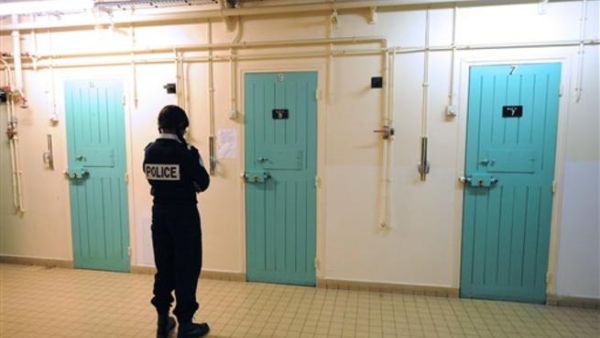Namo Rostamzada looks busy, leading his colleagues in setting up a tent inside Shander Park in Erbil. One team member calls on park visitors to gather by the tent. The team aims to exchange messages between people outside and jailed women through performance art.
As soon as a crowd of people curiously gather, Namo retrieves letters from a basket and reads them aloud: "These are letters from women at the correction center; they were sent to all of you, who are free." He distributes the letters and asks people to reply to them. The crowd, mostly men, start writing answers in blue on the tent, the "Tent of Words," to be sent back to the women in the Correction Center.
A young man asks Namo how he should reply because the letters don't make any sense. "Some of the jailed women are illiterate and didn't want to be excluded from this activity; they insisted in expressing their opinions through those lines; they wanted you to know that they really exist as well," replies Namo. Some of the crowd is also illiterate; they draw lines on the tent as if they were replying to the letters.
"We all owe the female gender because they have brought us to life...we all feel ashamed toward them because we have hurt them," says crowd member Hoshang Kareem, 27.
When everyone finished, Namo, his colleagues and the crowd joined hands in a circle. They danced to music, and ended by hoping for an end to violence against women.
Namo Rostamzada, more popular with his first name, is a painter. He changed his career to installation and performance art, which are forms of modern art that interpret art into real activity.
The group videoed the whole process and is considering making a film out of it to give to the media and show to the general public "in order to collect support for jailed women," says Namo, noting that some jailed women are not even visited by their families.
"Eradicating violence against women shouldn't be a task only for the government; people also have to play a role," says Wurya Budaghi, a member of the group. The project proved that people who "we think are violent" are willing to take part in campaigns to end violence against women, he adds. "Here we as artists acted to remind those people that, even if the women in jail have committed crimes, they are forgivable. And society should hug them."
The women in the correction center are not all criminals; some of them are legally innocent but they shelter to escape family threats. The center has four big rooms: two of them for 18 sentenced women, and the other two for sheltered women.
The women's cases are mostly related to issues of betrayal, prostitution and love affairs, notes Kurdistan Zirar, a sociologist and researcher at the Erbil correction center for women and children. She also is a member of Namo's team for the performance art project. In order not to be killed, "those women prefer to go to jail," she added, and criticized laws for strictness on the women. For a crime like prostitution, two sides are involved and the consequences must be equal for both, Zirar says.








